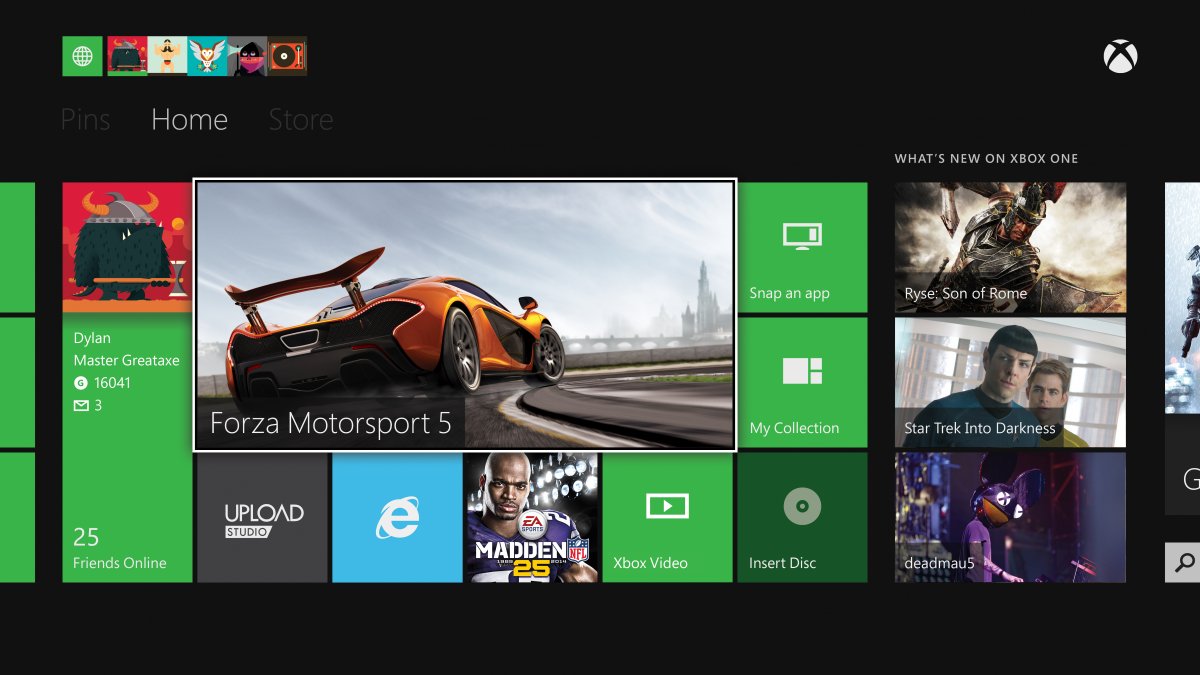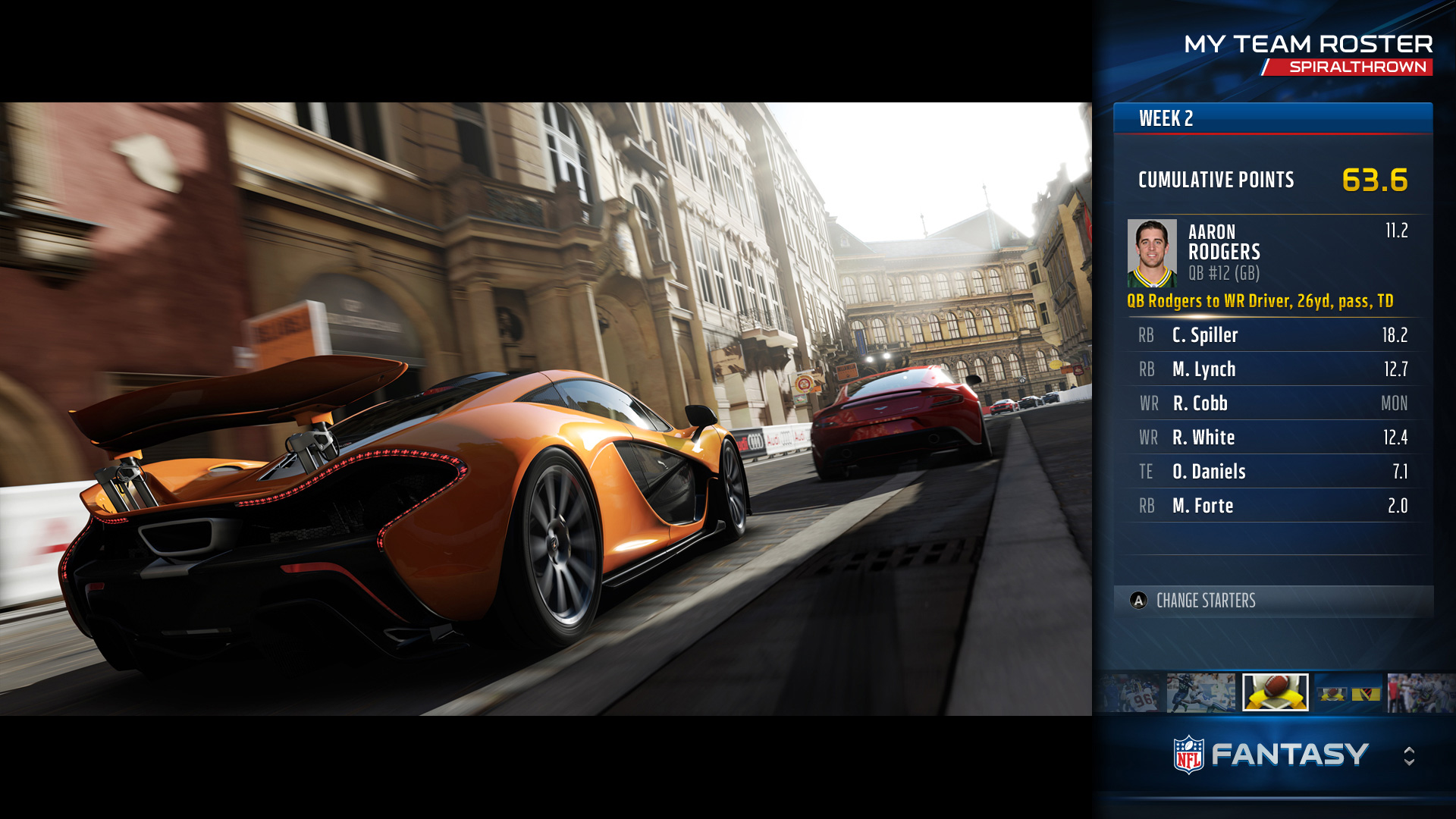All-In-One Entertainment Is Here.
The Xbox One started its journey along a very bumpy road. The console was announced with few games, and in gaming's place came too much focus on TV, the NFL, and a bunch of other things gamers care very little about. Despite showing plenty of software at E3, Microsoft’s presentation did little to earn the support of gamers, and confirmations of risky rumors like an always-on DRM and mandatory Kinect ended up causing widespread consumer distrust. A $499 price tag—a full $100 more than the PS4—almost seemed to be the final nail in the coffin. But policies changed, hype grew, and slowly but surely, Xbox One started shaping up to be a worthy console. And now it’s here. Has Microsoft kept that “all-in-one” entertainment promise while still delivering the experience gamers expect?
Hardware and Peripherals
I really didn’t imagine that it would make much of a difference, but opening that sleek, glossy black Day One Edition Xbox One box really did set the Xbox One apart from other console launches immediately. It felt superior and… different. Aside from the box and a Day One Edition controller with a chrome-looking D-pad, the console is identical to any regular Xbox One you can buy. But there was definitely a sense that I was taking part in a rare moment in gaming history.
Set up is a breeze, and all ports are clearly labeled for the less tech-savvy consumers out there. Packed into the box is everything you need to get started: HMDI cable, a massive power brick, a chat headset, and Kinect. The Xbox One itself strikes a pleasant balance between a futuristic vision and a retro VCR vibe. It exudes power due to its stocky design which looks more like a cable box than a game console.
But that’s Microsoft’s aim—make the Xbox One part of your entertainment center, not just your gaming console. Kinect has a similarly boxy design, more befitting of inclusion in a home theater setup (whereas the old Kinect looked like a toy). Both the Xbox One and Kinect have an Xbox One logo that glows white when powered on. The entire package has a sophisticated, luxury appearance—it doesn’t stand-out, but it looks very clean, organized, and slick.
The controller is mostly unchanged from the Xbox 360 controller aesthetically, yet much more refined, boasting over 40 improvements. The body is slimmer, making for a very comfortable feel in-hand. The triggers have a better squeeze to them and now provide separate force feedback. Analog sticks have a convex thumb indent and the pad portion of the stick has a ridge to it for better grip and precise movements. The D-pad is much less stiff and allows the thumb to more easily sweep across it for better input in fighting games—fixing the biggest complaint I had with the Xbox 360 pad. Start and Back buttons have been replaced with View and Menu, both of which allow faster interaction with the Xbox One dashboard and UI.

All of this makes for a fantastic controller, except for one thing: It runs off two AA batteries. Granted, you can pay $25 for a Play & Charge kit, but out of the box, this just murders the perception of it being a next-gen controller. It also makes additional controllers a rip-off at $59.99 when they're lacking a lithium-ion battery.
Kinect proves to be a useful addition immediately out of the box even if only for voice commands or logging you into your account when it sees your face. Sit down to start playing and you'll feel special just for Kinect's immediate recognition of you, which gives the Xbox One a personal feel. I’m sure some users may feel that Kinect gets too personal with you, watching you at all times, even detecting your heart rate. For those not paranoid by the constant monitoring, Kinect makes interacting with the Xbox One an easier experience than even simply pressing buttons.

With regard to gaming, Kinect is accurate and can detect multiple users with various metrics. Beyond gaming, Kinect will work with Xbox Fitness, can be used as a 1080p camera for Skype, and so much more. In time, I’m sure we’ll see Microsoft’s dream of Kinect fully-realized, but for now, it’s still a hard-sell of potential and not much more for the additional cost.
Dashboard, Apps, and Media
After a short initial setup, I connected to Xbox Live, logged into my Gamertag, and had Kinect get to know me so that it could recognize my face and log me in instantly in the future. Once this was over and done with, a green Xbox One logo stalls you for a few minutes—the excitement begins. On initial start-up, the Xbox One started playing loud rock music over a video showing footage from a bunch of Xbox One launch games in addition to a brief overview of the console’s features. More in-depth tutorials and videos are available in the dashboard, but this powerful glimpse at the Xbox One’s capabilities not only did a great job prepping me for what I was about to experience, but it packed a ton of wow factor—I’ve never witnessed anything like it before when starting up a new console for the first time. I could tell I was in for something cool.

The Xbox One dashboard will be familiar to Xbox 360 users and Windows 8 users alike, as it’s a blend of two Microsoft Operating Systems. Live tiles make up the menu, leading to games, the Store, Friends, TV, Movies, Music, and a bevy of apps. Depending on what game you’re playing the most, or what apps you’re getting the most use out of, you can pin them to the start menu for easier access. The dashboard can feel overly cluttered, but is straight-forward enough that anyone can navigate it without too many issues. For those that find themselves confused by navigating the dash with the controller, you can more easily get where you want by simply saying “Xbox," then using voice commands.
The Xbox One is a full media experience. It’s got music, movies, apps. It even has Blu-ray now. It can play your personal files on a home network via a SkyDrive app. It’s got an HDMI in port allowing you to hook your cable box up to use the Xbox One as a guide and personalized TV viewing experience. Game DVR lets you record 30-second and five-minute video clips that can be uploaded online or saved to your Skydrive so you can share your greatest moments without being tied to any specific service. An NFL app shows scores, stats, even connects you with NFL.com’s Fantasy Football. It’s got Bing, it’s got Internet Explorer (some of you may see these two as cons), and it’s got Skype to make video calls through the Kinect camera. And best of all, the Xbox One multi-tasks.

Hitting the Xbox One logo in the middle of the controller, or by saying “Xbox, home," you’re instantly brought back the dashboard home screen. The main app or game being used still shows live in the largest live-tile. Just as easy, you can switch into other apps. Or, by using a new feature called Snap, you can actually do two things at once in picture-in-picture or picture-and-sidebar. Snap creates a side-tile that opens up so that you can play games and access music at the same time. Or while playing a game, you can bring up Internet Explorer to check out our FAQs. Or maybe you’re watching the game on live-TV, and you want to check on your Fantasy Football stats with the NFL app. Whatever it is, you can do it, and it’s simple and seamless—though I could see this feature intimidating inexperienced users.
Another added value is Xbox Fitness. The majority of gamers probably won't touch this app, but that’s a damn shame considering how robust the offering from day one. Trainers like Jillian Michaels and Tony Horton have their most famous fitness programs on here, and pairing them with Kinect records your progress and fitness levels. I was shocked to see so many different programs and goals available at launch, but there is a catch: Xbox Fitness may require a separate subscription starting next year. There is also some paid content in there despite it being promoted as a free feature on Xbox One.

The amount of available apps and features on Xbox One is the console’s best selling point. It does so many different things right out of the box, and it's the closest thing yet to an all-in-one entertainment device that owns your living room—something that console and set-top box manufacturers have been after for years.
Launch Line-up, Outlook, and Conclusion
The Xbox One’s line-up is very strong, with one big staple Microsoft franchise leading the pack in Forza Motorsport 5. Variety and more eye-candy comes by way of Ryse: Son of Rome, while gamers will be better suited for Dead Rising 3. Fighting and nostalgia fans will be satisfied with Killer Instinct, even despite an odd release model that gives a bare-bones game away for free. Multiplatform games look great, but can’t quite seem to hit the full HD 1080p resolution, which is a shortcoming on a next-generation console. Indies and digital titles are slim-picking. Games are clearly not Microsoft’s focus, but they’ve got the better launch line-up and better immediate outlook with games like Titanfall and Plants Vs. Zombies: Garden Warfare coming in Q1 2014.

Being that the Xbox One has arrived already a complete media experience, it’s difficult to envision much evolution here. More apps will surely be available in the future, but it already does it all, and that’s a great thing.
Xbox One’s all-in-one experience is incredibly impressive for a tech-lover and entertainment buff. Gamers may find these features useful, but they're mainly looking for a strong game experience, which the Xbox One also has. The dashboard and UI feels cluttered but extremely polished. Multi-tasking, voice commands, and other interconnected features tie it all together to make for a fluid user experience. The Xbox One’s biggest issue at this point isn’t in the hardware or the games, but in the $499 price tag and, as we’ve seen in the past, trying to do too many things at once can mean not doing any one thing well enough.
-
Wow factor; Instantly impressive
-
Design fits well with home entertainment systems
-
All-in-one entertainment and media device
-
Skype, Xbox Fitness, Skydrive, and more apps already available
-
Multitasking via Snap
-
Kinect required
-
Controller feels great and has many improvements…
-
…But requires AA batteries or a $25 Play & Charge kit
-
UI can feel cluttered
-
Most expensive console on the market currently at $499











